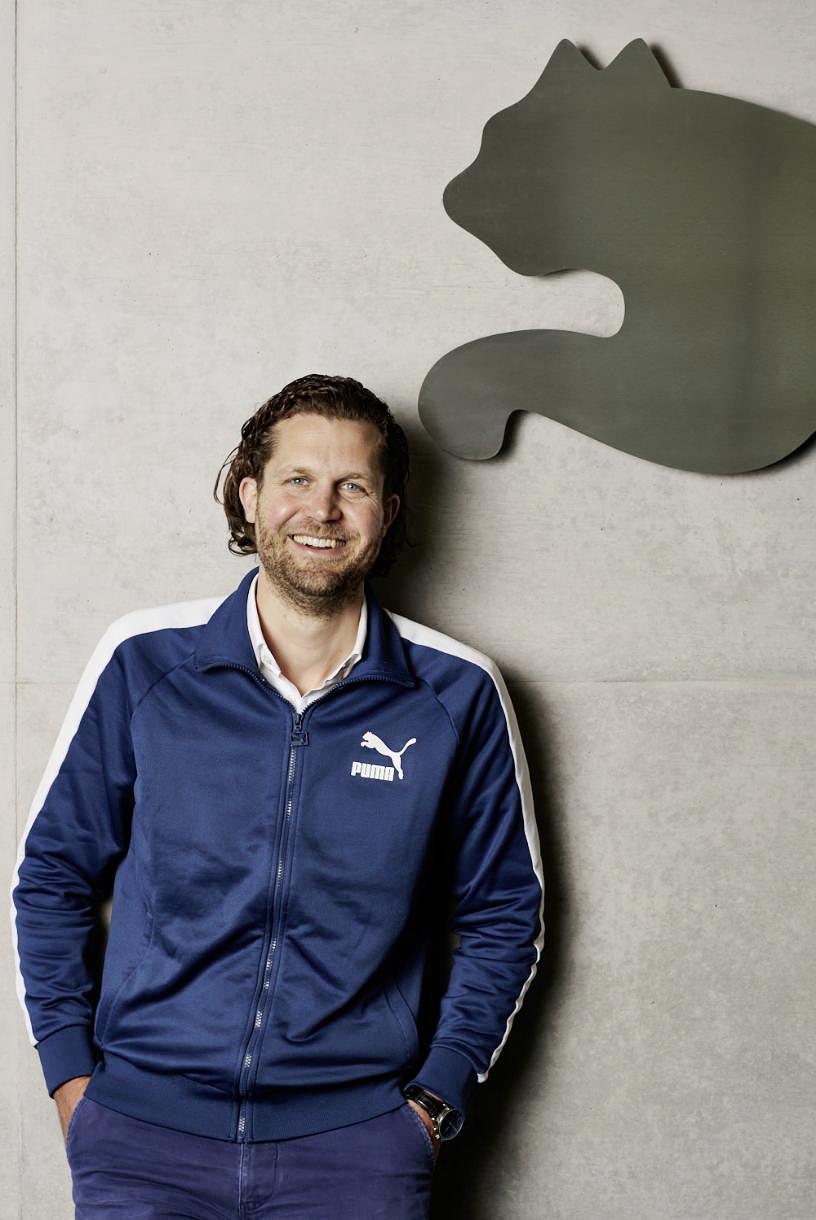
Interview with Arne Freundt, PUMA’s Chief Commercial Officer
Arne, 2021 was another record year for PUMA. What’s your reflection on 2021?
2021 was indeed an amazing year for PUMA – both from a brand and financial perspective. As the fastest sports brand in the industry, we celebrated great successes with our athletes and clubs – especially during the UEFA Euro Football Championships and the Olympics. Moreover, we demonstrated to all external stakeholders that PUMA continues to be the fastest growing sports brand in the market. For me, this is testament to the success of our partnership strategy, which focuses on the structural integrity of our entire value chain, as well as to the hard work of our highly committed and engaged PUMA Family members.
Talking about partnership strategy: PUMA’s competitors have laid out very ambitious Direct-to-Consumer plans. What is PUMA’s channel strategy?
We talk consumers first, channels second. We fully respect our consumer’s preferences in terms of distribution choice, and we have no intention to educate them where they should or should not buy their sports gear. Wholesale plays a crucial role in our strategy – not only due to their distribution reach, but also due to their retail and service excellence. I also believe that it is crucial for our consumers to have the best product offering of each brand next to each other in our wholesale partner stores. This allows our consumers to take the best purchasing decision in terms of technology, quality, design and value. We are convinced that PUMA products can compete with any competitor’s product on the shelves.
Arne FreundtChief Commercial Officer (CCO)

So, what does that mean for PUMA’s Direct-to-Consumer Strategy?
Our own and operated brick and mortar as well as eCommerce stores are complementing our distribution mix, but we don’t have any ambition to replace wholesale partners with our Direct-to-Consumer Channels. In mature markets, where we have an excellent wholesale partner network with a high reach, we focus our Direct-to-Consumer efforts primarily on Flagship Stores, eCommerce and Outlets. In other markets, such as China or India, where the wholesale landscape is not as developed, we operate many own and mono-branded partner stores to ensure we provide the reach to our consumers. In short, the role and importance of our Direct-to-Consumer channels varies in line with individual market situations. However, our unique selling point remains consistent: With our Direct-to-Consumer channels, PUMA provides the best brand experience with the widest product offering to our consumers. To further enhance this brand experience and, PUMA will introduce a shopping app in the second quarter of this year, which will provide consumers access to the latest PUMA products as well as exclusive services and content from the brand and its ambassadors.
You mentioned that you are taking a different approach according to the individual market. What are PUMA’s focus markets?
Due to the sheer size as sporting goods markets, USA, Europe and China remain our most important markets. In addition, we have identified Mexico and India as additional focus markets for us. In these markets, we have gained significant market shares in the past years and were able to demonstrate that PUMA is not only a strong #3 brand but has also the potential to be #2 or even a #1 brand.
How are you approaching these markets to gain market shares?
We clearly follow the principle of the local entrepreneur. In each PUMA subsidiary, we have a skilled management team who is fully empowered to take the right decisions for their markets. We are very proud that almost all markets are managed by local teams which proves that we have done an excellent job in recruiting, developing and retaining strong local talents. This powerful combination of local entrepreneurship and local talents allows us to take the right decision in each market very quickly.
But as a global brand how are you ensuring brand consistency among all the local entrepreneurs?
Obviously, our local management teams are supported and guided by our global functions – most importantly brand management, product development and sourcing. In addition, we define clear frameworks and expectations for our markets, but we also give them a lot of freedom to achieve their targets. For example, it’s utmost important that all our markets anchor PUMA as a leading sports performance brand in their consumers’ mind. All our markets have to follow this guideline and ensure that PUMA is positioned as a credible brand, especially in Football and Running. However, our markets have the freedom to focus on local sports to enhance the credibility in their markets, such as Basketball in the USA, Cricket in India or Rugby in South Africa.
What is your outlook for 2022?
In line with our brand mantra Forever Faster, we will continue to push the envelope and gain further market shares. I am very confident and optimistic that PUMA will continue to be the fastest growing sports brand. We have the strongest partnerships and the most committed and engaged employees, which I am very proud of.